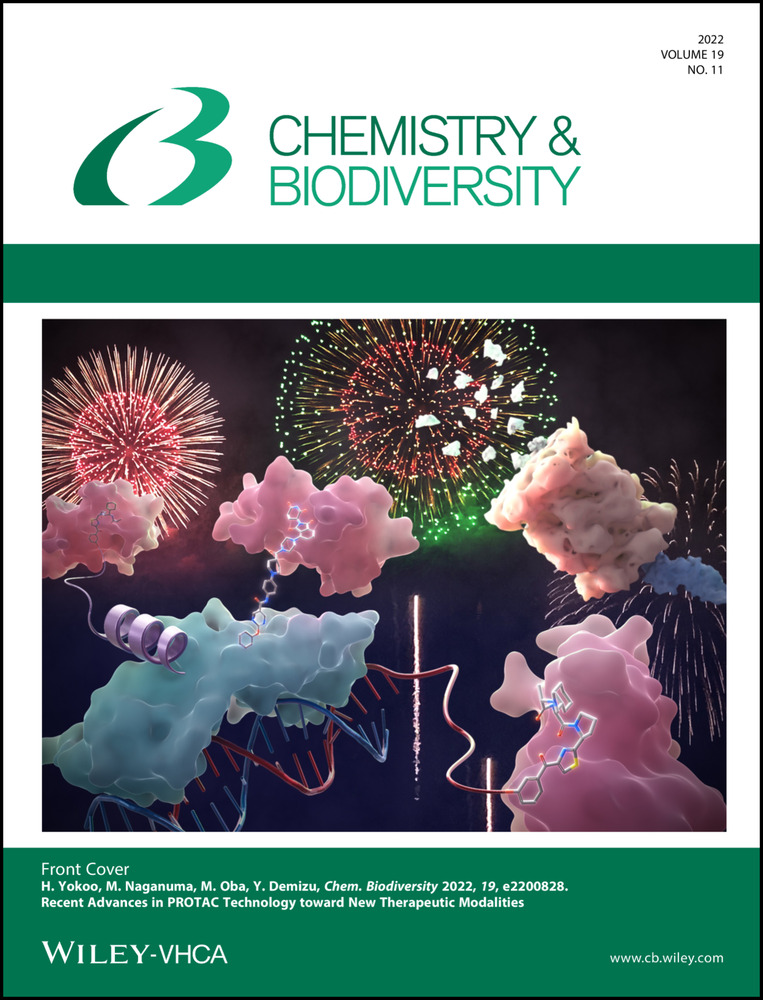Phelliribsin B: A New Styrylpyrone Derivative from the Medicinal Fungus Phellinus ribis
Abstract
A novel styrylpyrone derivative, named phelliribsin B (1), as well as four biogenetically related known compounds, phellifuropyranone A (2), inoscavin C (3), inoscavin A (4), and inoscavin D (5) were separated and purified from the medicinal fungus Phellinus ribis. The structure of phelliribsin B was determined by spectroscopic analysis, and the absolute configuration was assigned by experimental and calculated ECD data. Additionally, the plausible biosynthetic pathway of 1 was also proposed. Compound 1 showed moderately cytotoxic activity against HepG2 and SKOV-3 tumor cell lines with IC50 values of 32.71 and 57.89 μM, respectively. Based on the results of cytotoxicity against HepG2 tumor cells, the structure-activity relationship of compounds 1–4 with similar skeletons was discussed. The styrylpyrone derivatives with similar skeletons have moderately cytotoxic activity and have the potential to play an important role in the anti-tumor treatment.
Graphical Abstract
Conflict of interest
The authors declare no conflict of interest.
Open Research
Data Availability Statement
The data that support the findings of this study are available in the supplementary material of this article.





